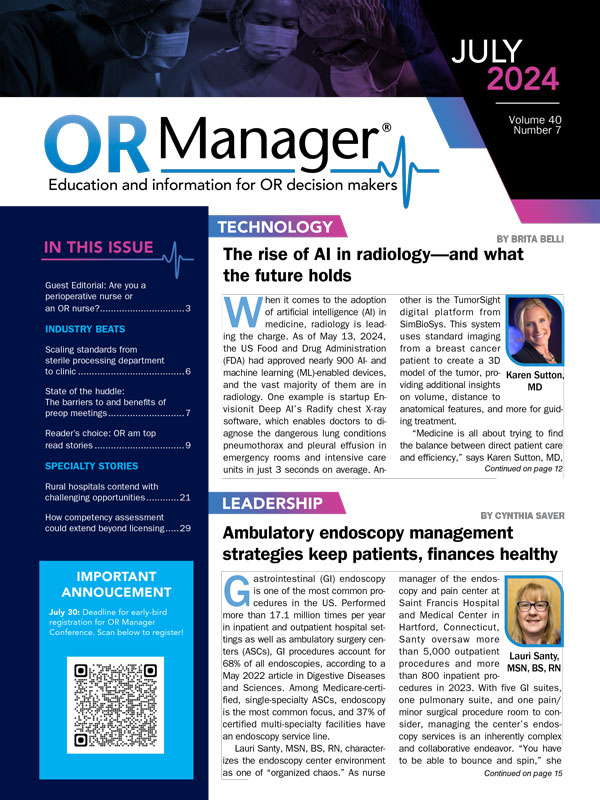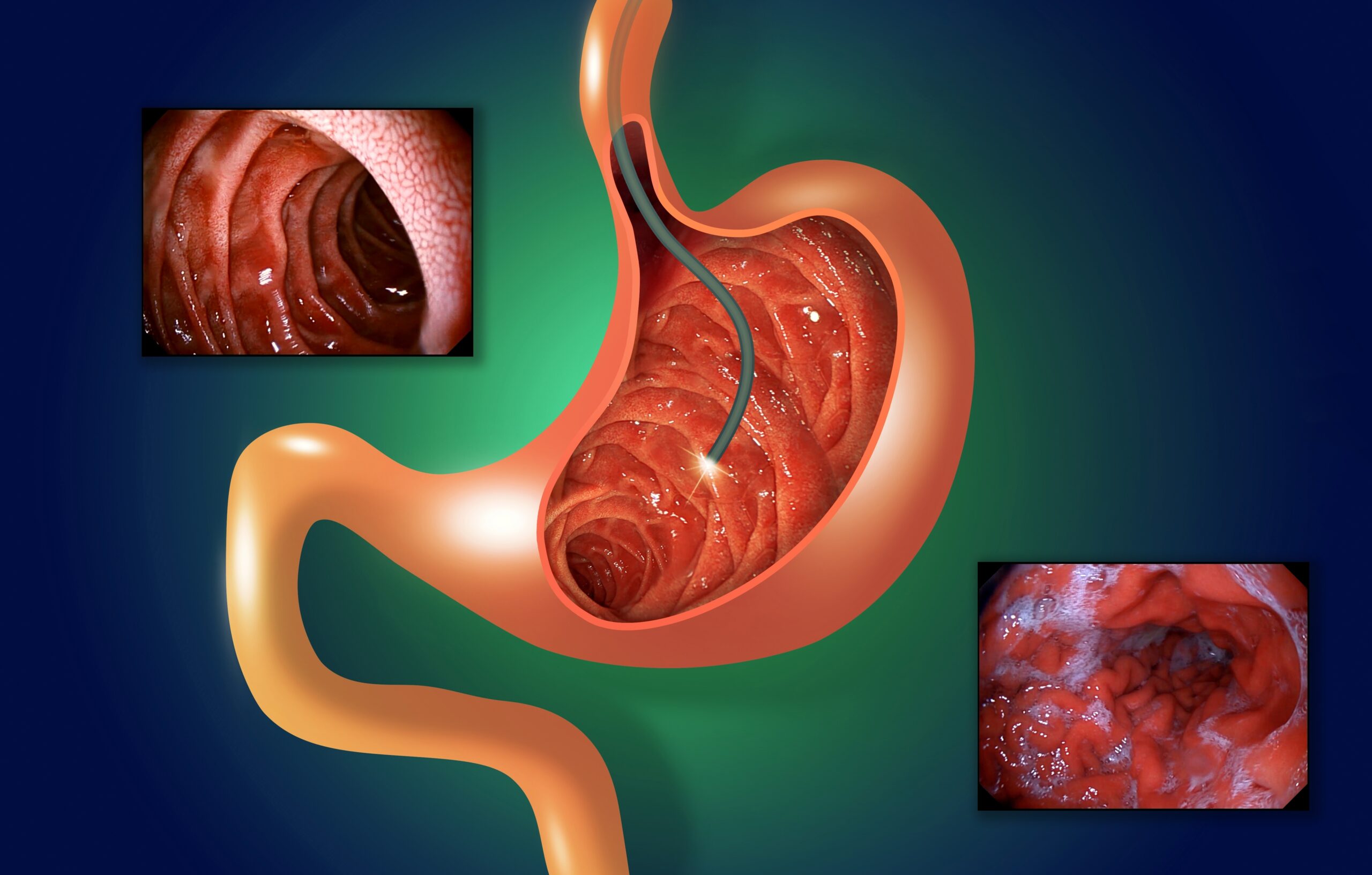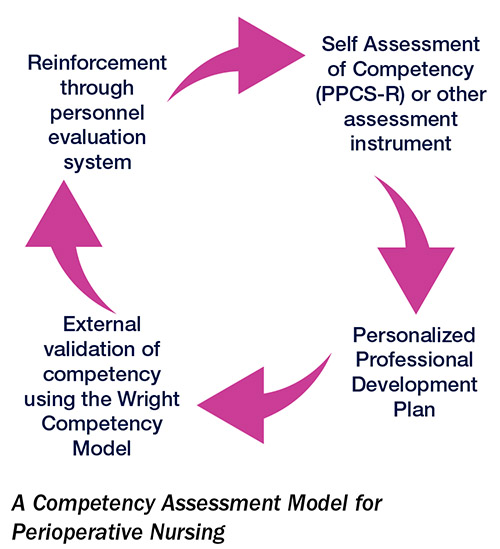
- Ambulatory endoscopy management strategies keep patients, finances healthy
- Rural hospitals contend with challenging opportunities
- How competency assessment could extend beyond licensing
- Editorial: Are you a perioperative nurse or an OR nurse?
- Scaling standards from sterile processing department to clinic
- State of the huddle: The barriers to and benefits of preop meetings
- The rise of AI in radiology—and what the future holds
Ambulatory endoscopy management strategies keep patients, finances healthy

Gastrointestinal (GI) endoscopy is one of the most common procedures in the US. Performed more than 17.1 million times per year in inpatient and outpatient hospital settings as well as ambulatory surgery centers (ASCs), GI procedures account for 68% of all endoscopies, according to a May 2022 article in Digestive…
Rural hospitals contend with challenging opportunities

Rural hospitals in the US have been facing a prolonged, multifaceted crisis. The literature presents several reasons for why healthcare facilities in rural areas struggle, including shrinking budgets, rising chronic illness and public health issues like addiction and obesity, poor telehealth and broadband access, aging populations, deteriorating mental health, and…
How competency assessment could extend beyond licensing

Competency assessment in perioperative nursing—and American healthcare in general—is a story of unrealized potential. Particularly in the wake of the pandemic, staffing shortfalls and financial pressures have made focusing on staff development difficult for nurse leaders. Nonetheless, the argument for investing more in professional development and competency has never been…
Editorial: Are you a perioperative nurse or an OR nurse?

For me, the answer is easy. For 25 years I have consistently said, “I’ve never nursed an OR a day in my life; it’s always been the patients.” As perioperative nurses, what we do is about more than where we work. Why is it that 25 years after the Association…
Scaling standards from sterile processing department to clinic

Reforming instrument reprocessing practices does not always end with the main sterile processing department (SPD). Holding clinics to the same standard adds to the challenge, whether they are associated with hospitals or operate independently. Nonetheless, standardization is just as essential to maintaining efficiency and quality standards. Establishing and maintaining best…
State of the huddle: The barriers to and benefits of preop meetings

Complex problems do not always require complex solutions. Consider the surgical safety checklist. In 2020, more than a decade after the World Health Organization (WHO) started advocating that every hospital use the checklist, research from PSNET found that more than 90% of ORs in countries with a high human development…
The rise of AI in radiology—and what the future holds

When it comes to the adoption of artificial intelligence (AI) in medicine, radiology is leading the charge. As of May 13, 2024, the US Food and Drug Administration (FDA) had approved nearly 900 AI- and machine learning (ML)-enabled devices, and the vast majority of them are in radiology. One example…

 Free Daily News
Free Daily News